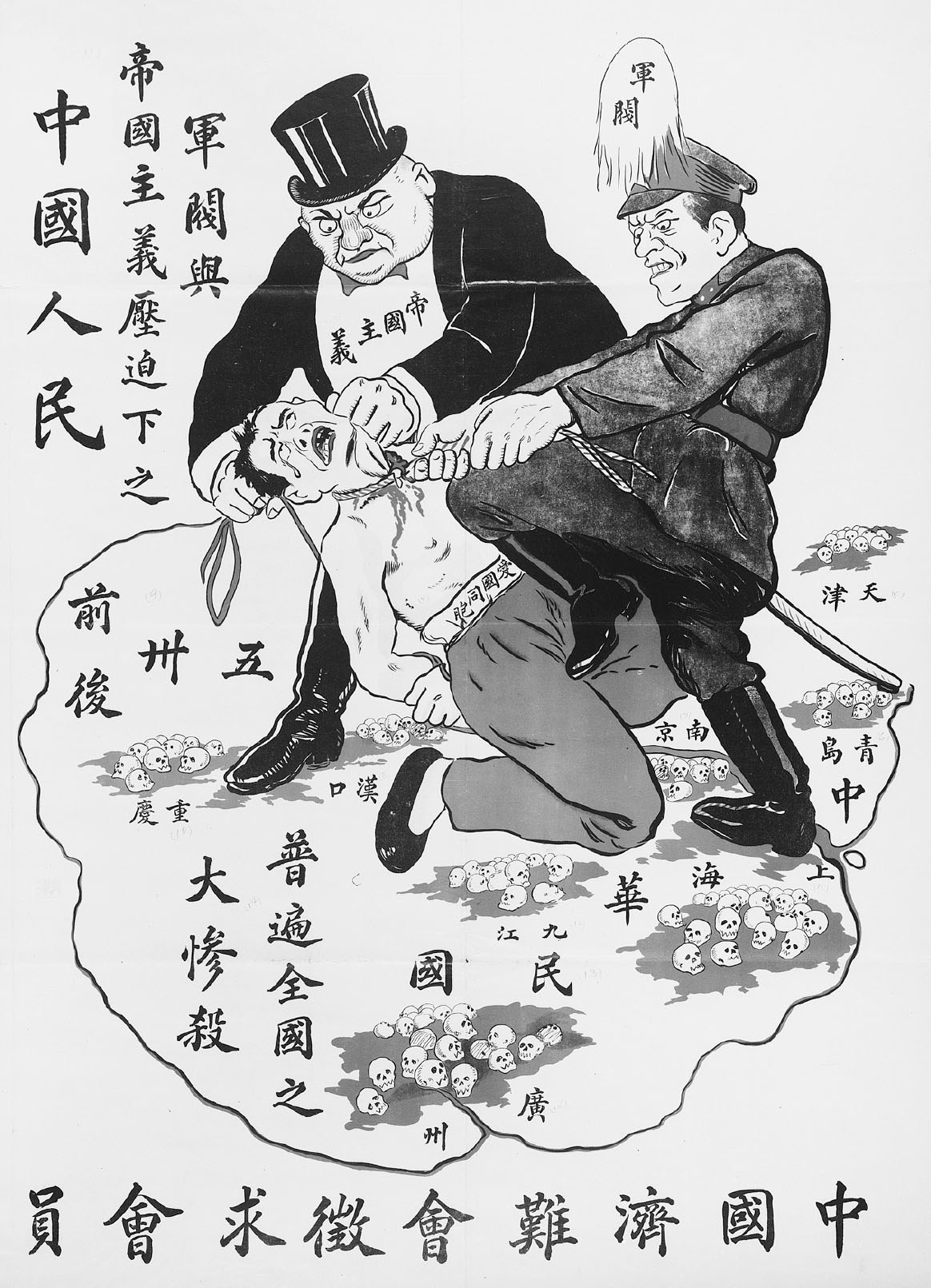A History of World Societies:
Printed Page 903
A History of World Societies Value
Edition: Printed Page 915
Chapter Chronology
China’s Intellectual Revolution
Nationalism was the most powerful idea in China between 1911 and 1929, but it was only one aspect of a complex intellectual revolution, generally known as the New Culture Movement, that hammered at traditional Chinese thought and custom, advocated cultural renaissance, and pushed China into the modern world. The New Culture Movement was founded around 1916 by young Western-oriented intellectuals in Beijing, some of whom were later involved in the May Fourth Movement in 1919. These intellectuals fiercely attacked China’s ancient Confucian ethics, which subordinated subjects to rulers, sons to fathers, and wives to husbands. As modernists, they provocatively advocated new and anti-Confucian virtues: individualism, democratic equality, and the critical scientific method. They also promoted the use of simple, understandable written language as a means to clear thinking and mass education. China, they said, needed a whole new culture, a radically different worldview.
Many intellectuals thought the radical worldview China needed was Marxist socialism. It, too, was Western in origin, “scientific” in approach, and materialist in its denial of religious belief and Confucian family ethics. But while liberalism and individualism reflected the bewildering range of Western thought since the Enlightenment, Marxist socialism offered the certainty of a single all-encompassing creed. As one young Communist intellectual exclaimed, “I am now able to impose order on all the ideas which I could not reconcile; I have found the key to all the problems which appeared to me self-contradictory and insoluble.”8
Though undeniably Western, Marxism provided a means of criticizing Western dominance, thereby salving Chinese pride. Chinese Communists could blame China’s pitiful weakness on rapacious foreign capitalistic imperialism. Thus Marxism, as modified by Lenin and applied by the Bolsheviks in the Soviet Union, appeared as a means of catching up with the hated but envied West. For Chinese believers, it promised salvation soon.

Picturing the PastThe Fate of a Chinese Patriot On May 30, 1925, Shanghai police opened fire on a group of Chinese demonstrators who were protesting unfair labor practices and wages and the foreign imperialist presence in their country. The police killed nine people and wounded many others, touching off nationwide and international protests and attacks on foreign offices and businesses. This political cartoon shows the fate of the Chinese patriots at the hands of warlords and foreign imperialists. (Library of Congress, LC-USZ62-99451)ANALYZING THE IMAGE Which figures represent Chinese warlords, foreign imperialists, and Chinese patriots? What does the cartoon suggest about the fate of the Chinese demonstrators? What emotions are these images trying to evoke in the person viewing the cartoon?CONNECTIONS Why might foreign imperialists and Chinese warlords work together to put down the demonstrations?
Chinese Communists could and did interpret Marxism-Leninism to appeal to the masses — the peasants. Mao Zedong (Mao Tse-tung) in particular quickly recognized the impoverished Chinese peasantry’s enormous revolutionary potential. (See “Viewpoints 29.1: Gandhi and Mao on Revolutionary Means.”) A member of a prosperous, hard-working peasant family, Mao (1893–1976) converted to Marxist socialism in 1918. He began his revolutionary career as an urban labor organizer. In 1925 protest strikes by Chinese textile workers against their Japanese employers unexpectedly spread from the big coastal cities to rural China, prompting Mao (like Lenin in Russia) to reconsider the peasants (see “Lenin and the Bolshevik Revolution” in Chapter 28). Investigating the rapid growth of radical peasant associations in Hunan province, Mao argued passionately in a 1927 report:
The force of the peasantry is like that of the raging winds and driving rain. It is rapidly increasing in violence. No force can stand in its way. The peasantry will tear apart all nets which bind it and hasten along the road to liberation. They will bury beneath them all forces of imperialism, militarism, corrupt officialdom, village bosses and evil gentry.9
Mao’s first experiment in peasant revolt — the Autumn Harvest Uprising of September 1927 — was not successful, but Mao learned quickly. He advocated equal distribution of land and broke up his forces into small guerrilla groups. After 1928 he and his supporters built up a self-governing Communist soviet, centered at Ruijin ( Juichin) in southeastern China, and dug in against Nationalist attacks.
China’s intellectual revolution also stimulated profound changes in popular culture and family life. (See “Individuals in Society: Ning Lao, a Chinese Working Woman.”) After the 1911 Revolution Chinese women enjoyed increasingly greater freedom and equality. Foot binding was outlawed and attacked as cruel and uncivilized. Arranged marriages and polygamy declined. Women gradually gained unprecedented educational and economic opportunities. Thus rising nationalism and the intellectual revolution interacted with monumental changes in Chinese family life.
